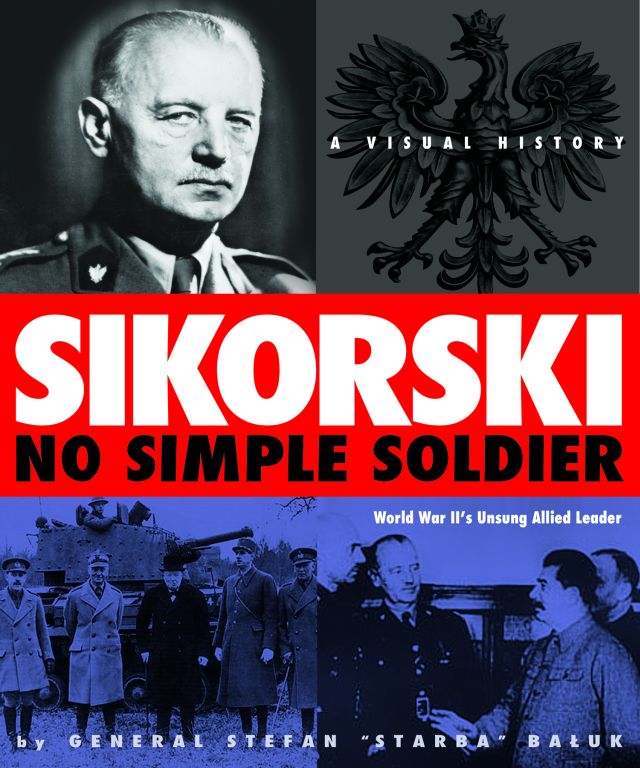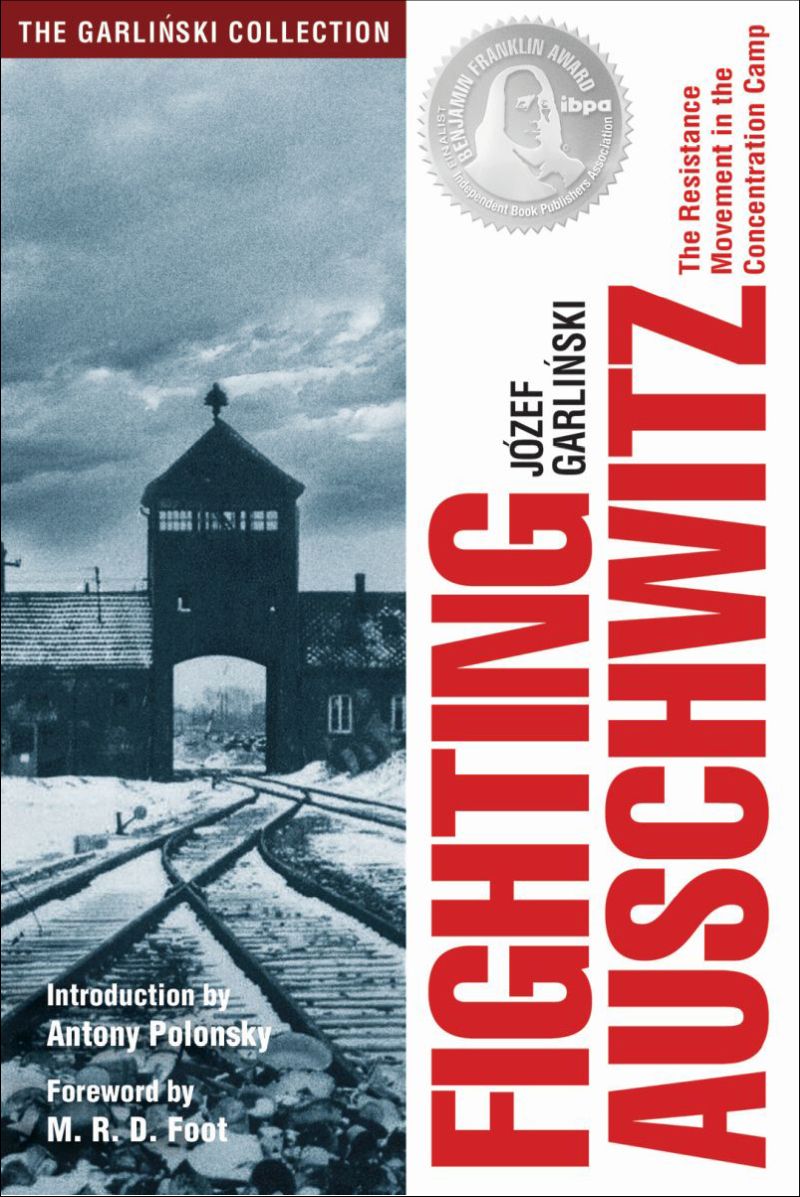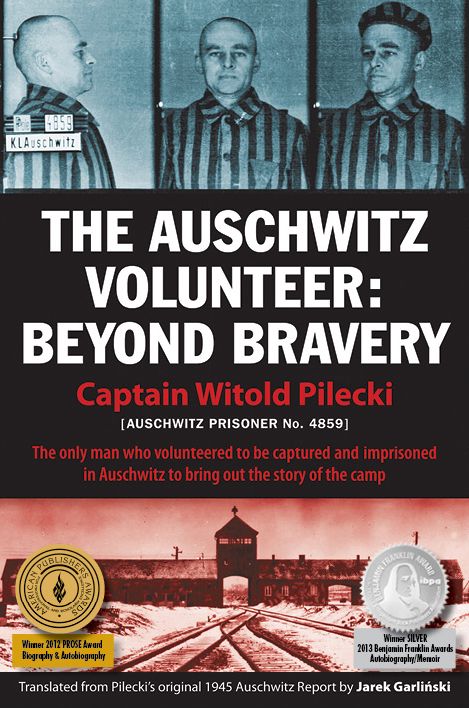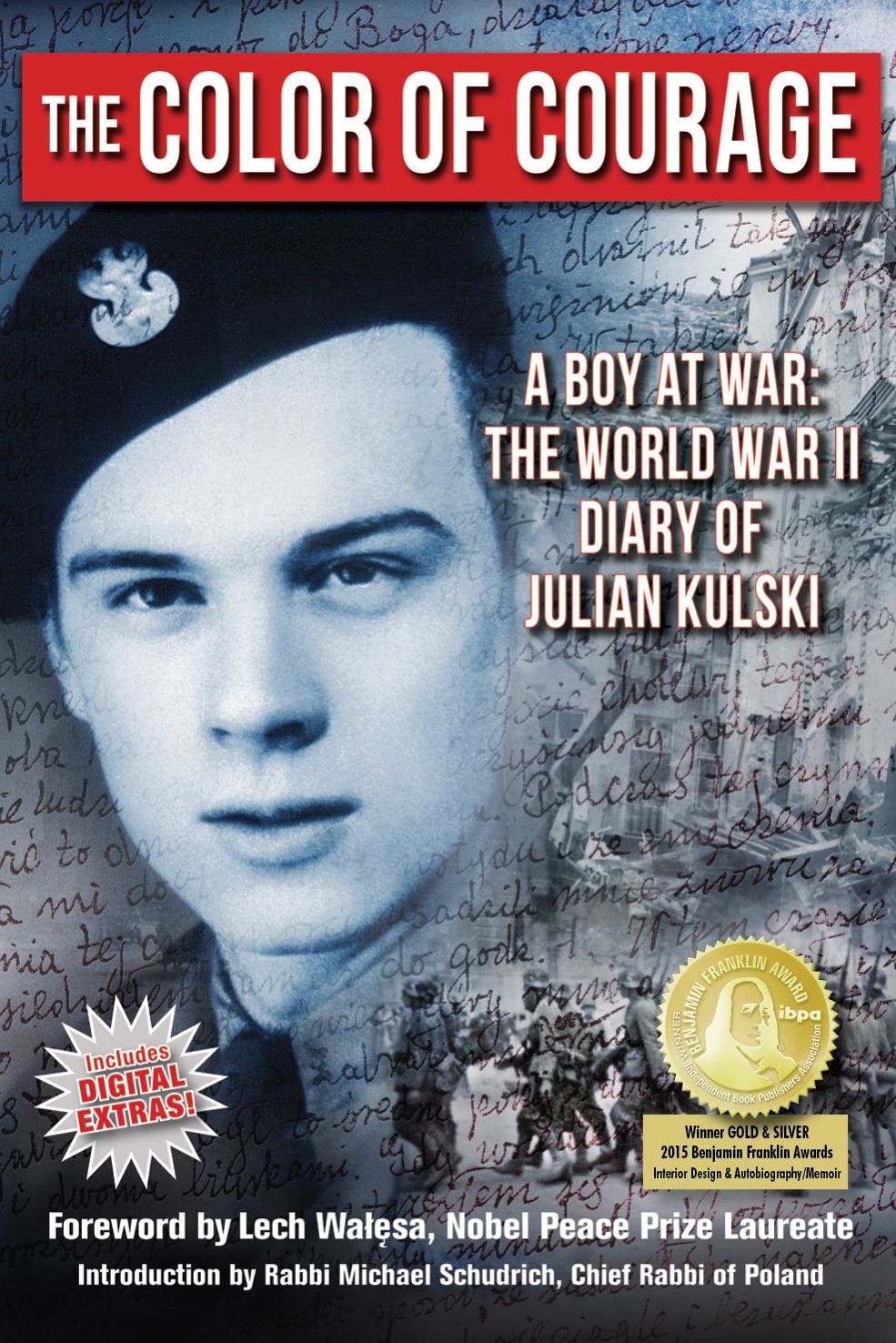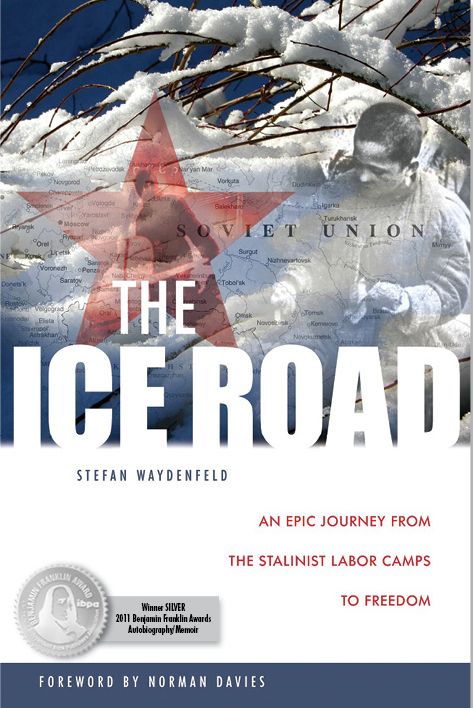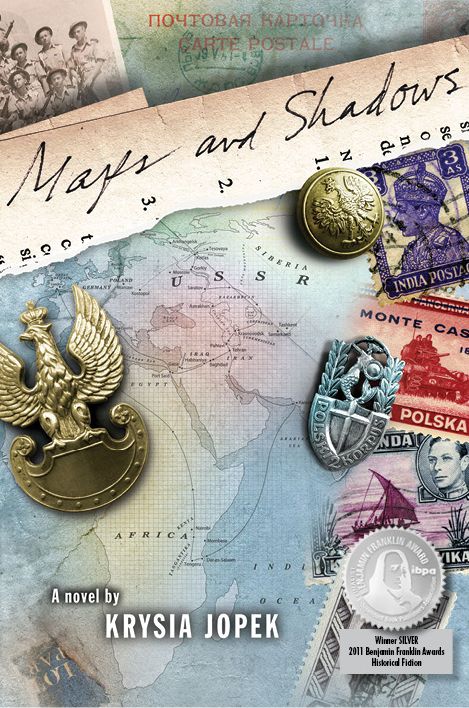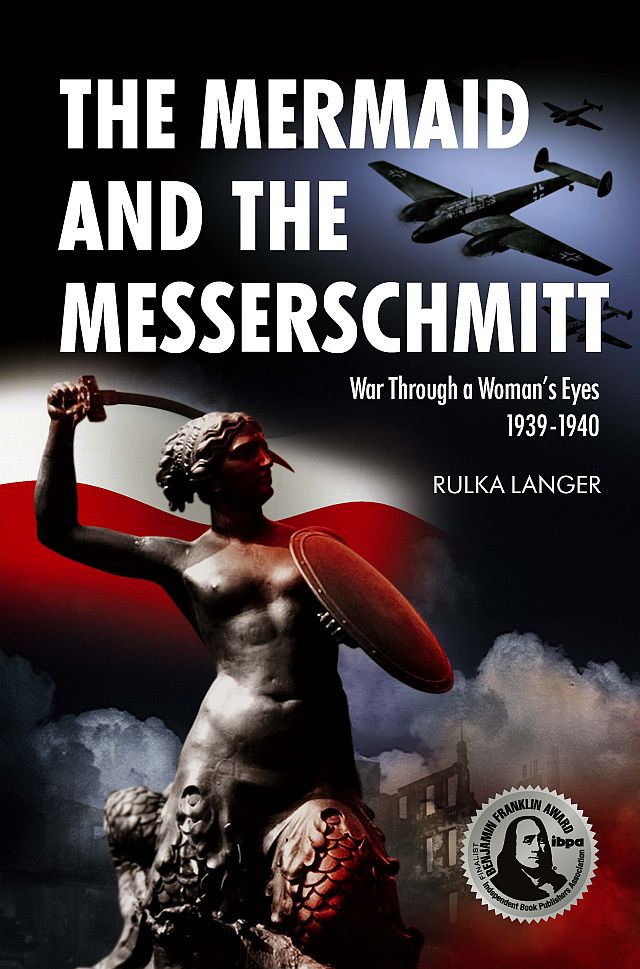THE AQUILA POLONICA PRIZE
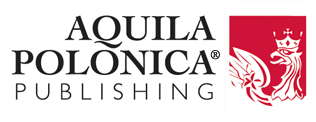
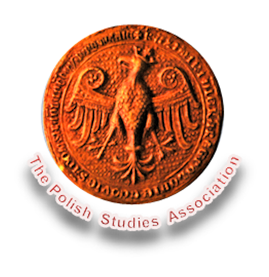
2011 NOMINEES
Nineteen nominees were shortlisted for the 2011 Aquila Polonica Prize. Below is a list of the nominees with a summary of their articles. Clicking on any of the titles below will take you to the website for each article. In many cases, subscriptions are required to read the full article. Winners are denoted with a double asterisk; a single asterisk denotes the article that received Honorable Mention. Download the press release here...
Patryk Babiracki, "Between Compromise and Distrust: The Soviet Information Bureau's Operations in Poland, 1945-1953," Cultural and Social History 6 (2009): 345-367.
The article explores the Soviet Information Bureau’s manipulation of the Polish press from 1945 to 1953, the interaction of Soviet and Polish officials and the meager results achieved by these efforts. The article illuminates the operation of the Soviet foreign propaganda unit and the problematic character of the project to mold Polish opinion of the USSR. It also reveals the inherent early weaknesses of the Soviet East European Empire more generally.
* Robert Brier, "Adam Michnik's Understanding of Totalitarianism and the West European Left: A Historical and Transnational Approach to Dissident Political Thought," East European Politics and Societies 25 (2011): 197-218.
There is a supreme irony concerning the history of the concept of “totalitarianism”: during the 1970s, many Western social scientists and intellectuals abandoned this concept, arguing that it was too rigid to account for the changes that were occurring in Eastern Europe at the time; one of the developments they cited was the rise of Central European and Soviet dissidents. at precisely this time, however, the dissidents themselves started to apply the adjective totalitarian to the Communist regimes they rebelled against. Focusing on Adam Michnik’s writings, the article assesses this seeming paradox by adopting a transnational perspective. The article’s main thesis is that, for Michnik, the value of “totalitarianism” did not lie in its analytical precision but in the discursive force the term acquired in transnational exchanges in which Michnik tried to mobilize the support of the Western left for the cause of the Polish opposition. The article substantiates this thesis with two case studies addressing West German Social Democrats, the concept of totalitarianism seems to have served as a means of convincing them that support for the Polish opposition was not detrimental to reforms in Eastern Europe and to international détente but a necessary precondition for any authentic peace. In addressing French audiences, Michnik seems to have used the adjective totalitarian to convince his interlocutors that human rights advocacy was not just any kind of issue but that French and Polish democratic socialists faced a common threat.
Richard Butterwick, "How Catholic Was the Grand Duchy of Lithuania in the Later Eighteenth Century?" Central Europe 8 (2010): 123-145.
In 1784 King Stanisław August Poniatowski undertook a splendid progress across the south-western parts of the Grand Duchy of Lithuania. The official account of the journey prompts the reflection that even in this linguistically and confessionally mixed part of the Polish-Lithuanian Commonwealth, the precedence over other confessions of the Catholic Church of both rites, Latin and Ruthenian, was axiomatic. By the mid-eighteenth century, about five-sixths of the Commonwealth's population, the vast majority of the noble citizenry, and the entire legislature were Catholic. However, Catholics of the Latin rite constituted only about half of the population. Most Catholics of the Ruthenian rite (Uniates) were in only nominal obedience to Rome; they were the object of a struggle for the allegiance and salvation of souls, conducted between an advancing Catholic Church and a retreating Orthodox Church. The fault line between Eastern and Western Christendom ran through both the Polish Crown and the Grand Duchy of Lithuania; Orthodoxy retained strongholds in both parts of the Commonwealth. However, the position of the 'Latin' Church was, in most ways, significantly weaker in the Grand Duchy, where the majority of the inhabitants were Uniates. Adapting recent mutations in 'confessionalization theory', this paper first reviews the confessional balance, and the privileges, structures, educational institutions, and missionary work of the Catholic Church (of both rites) in the Grand Duchy of Lithuania in the second half of the eighteenth century. It then asks how the dramatic events of Stanisław August's reign (1764–95) affected Catholic supremacy. These changes included the enforced removal of the Catholic monopoly of the legislature in 1768, the impact of the first partition of the Commonwealth in 1772, the Orthodox revivals under Bishops Georgii Konisskii and Viktor Sadkovskii, as well as the formulation of new policies intended to promote loyalty to the Commonwealth and social cohesion during the Four Years' Sejm (1788–92). It concludes that the partial 'deconfessionalization' of the polity had (or might have had) a proportionately greater impact on the Grand Duchy of Lithuania than on the Polish Crown.
Anna Cienciala, "The Foreign Policy of Józef Piłsudski and Józef Beck, 1926-1939: Misconceptions and Interpretations," The Polish Review 56 (2011): 111-152.
Professor Cienciala demonstrates the continuity of the key principles of Józef Piłsudski’s policy by Józef Beck. She also shows the international and Polish contexts of the decision to send an ultimatum to Prague on Zaolzie. Finally, she shows the importance of Beck’s decision to accept the British guarantee of Polish independence, and the significance of the Polish government’s decision to resist the German invasion. It delayed Hitler’s planned attack on France until May 1940, giving England time to produce enough fighter planes to win the Battle of Britain in which Polish pilots played an important role. Professor Cienciala joins Professor Rotfeld in the view that both Beck and his policies merit a positive re-evaluation.
Kathleen Cioffi, "From the Great Reform to the Post-Dramatic: Adaptation in the Polish Postwar Theatre," Canadian Slavonic Papers 52 (2010): 413-430.
The adaptation of literature not originally written for the stage into plays is extremely popular in present-day Polish theatre, and has evolved from roots in the Great Theatre Reform of the early twentieth century into a more avant-garde form than is typically seen in Anglophone theatre. The Great Reform notion of the director as auteur of a theatrical production is connected with theatrical adaptation, and was popularized in Poland by Leon Schiller, the founder of the directing department at the state theatre academy. In the early postwar era, Mieczysław Kotlarczyk’s influential Rhapsodic Theatre also produced adaptations of many classic works of prose and epic poetry. Starting in the 1960s, student theatres as well developed their own special variety of adaptation, and Grotowski and Kantor also freely adapted literary works in avant-garde productions that served their own directorial visions. By 1989, both mainstream and alternative theatres had developed adaptation into a tool that was often used to mount productions that criticized the Communist regime. After 1989, Krystian Lupa and his students have continued to adapt literary works less for political reasons than to make personal or artistic statements. Modernist fiction and postmodern mash-ups now fuel the post-dramatic stage adaptations that flourish on the Polish stage today.
Dieter De Bruyn, "World War 2.0: Commemorating War and Holocaust in Poland through Facebook," Digital Icons 4 (2010): 45-62.
The Internet seems to have become the area where instances of individual and collective remembrance, of private and public commemoration, and of memory and postmemory intersect in a new and effective way. This article explores two Polish examples of World War II and Holocaust commemoration that have recently been issued on Facebook: the Warsaw Rising commemorative campaign and the educational project on the young Holocaust victim Henio Żytomirski. As the analysis demonstrates, what determines the value of such online projects is their performative effectiveness. The examination of both examples aims to contribute to the current debate on cultural memory, in which the focus is increasingly on the dynamical and processual character of remembering, rather than on memory as a static product.
** Michael Fleming, "The Ethno-Religious Ambitions of the Roman Catholic Church and the Ascendancy of Communism in Post-War Poland (1945-1950)," Nations and Nationalism 16 (2010): 637-656.
This paper differentiates between centrifugal and centripetal aspects of ethno-nationalism to help account for the ascendancy of communism in the immediate aftermath ofWorldWar II in Poland. It argues that the directing of social antipathy to defined out-groups allowed the Polish Workers’ Party (PPR) to manage social anger and that the Roman Catholic Church’s ethno-religious agenda was aligned with the PPR’s ethno-nationalist policy. Furthermore, it is contended that the Church’s toleration of hostile actions directed at minority communities supported the PPR’s management of social anger. The paper concludes that the Church, despite its manifest intentions and contrary to contemporary perceptions, played a role in the PPR’s achievement of hegemony.
Alison Frank, "Environmental, Economic, and Moral Dimensions of Sustainability in the Petroleum Industry in Austrian Galicia," Modern Intellectual History 8 (2011): 171-191.
Fears about the sustainability of oil-rich communities and hopes that petroleum would fuel financial, social, and moral renewal have accompanied the oil industry since its inception in the mid-nineteenth century. With each successive ecological disaster caused by oil spills, debates over the industry's ecological sustainability sharpen. Discussions about the geological sustainability of the petroleum industry intensify when oil supplies tighten, and dissipate when they increase. Although concerns about the moral viability of communities dependent on oil have become radically unfamiliar since the late nineteenth century, these, too, were once central to debates about the effects of oil on human society. In the nineteenth century, the progress that oil promised to bring was to be measured not only in material wealth, but in the attainment of social harmony and the attenuation of political strife.
Agnieszka Graff, "Looking at Pictures of Gay Men: Political Uses of Homophobia in Contemporary Poland," Public Culture 22 (2010): 583-603.
During the recent period of right-wing rule, sometimes referred to as the Fourth Republic (2005 – 7), Poland developed a reputation for homophobia, prejudice against sexual minorities becoming its mark of difference in Europe. In January and June 2006, and again in April 2007, the European Parliament (EP) passed resolutions against homophobia, either alluding to Poland or mentioning it directly as a culprit in this area. The charge was not unearned: several lesbian, gay, bisexual, and transgender (LGBT) demonstrations had been banned; participants of gay pride parades (known in Poland as "equality marches") were regularly victimized by members of neo-Nazi groups; police had used violence against gay activists; and openly homophobic statements had been made by politicians.1 These developments add up to an exciting and chilling story, but my purpose is neither to revisit the events themselves nor to assess the level of hostility toward sexual minorities in Poland as compared to other European societies. Instead, I aim to examine the dynamic of what I call the politicization of homophobia, that is, to look at the interplay between revived nationalist sentiment in Poland’s public sphere following the country’s May 2004 European Union (EU) accession and the trend of gay bashing, which was indulged in or at least condoned by state authorities. I argue that the exchanges concerning limits of sexual freedom fulfilled an important political function in the early stage of Poland’s membership in the EU: the question of sexuality became a boundary marker, a reference point for political self-definition and national pride.
Anika Keinz, "European Desires and National Bedrooms? Negotiating 'Normalcy' in Postsocialist Poland," Central European History 44 (2011): 92-117.
Only a few years ago rights of sexual minorities in Poland caused not only national controversies over what democracy means, but also gained international attention, visible in demonstrations in front of embassies in Berlin and London, wide media coverage, and protest letters to the Polish prime minister by the Helsinki Foundation of Human Rights as well as Amnesty International and the International Lesbian and Gay Association (ILGA). Several Polish politicians were repeatedly cautioned for their extreme conservative stance on homosexual issues and homophobic remarks as well as criticized for the prohibitions of the so-called Marsz Równości (Equality March), the Polish version of the Christopher Street Day (usually known as Gay Pride Parade) as being against the standards of democracy and human rights. Finally, and in particular as a reaction to the various remarks of Polish politicians, a resolution against homophobia was submitted to the European Parliament in January 2006 and passed in June 2006. Despite the resolution, the then Polish minister of education, Roman Giertych (League of Polish Families, or LPR), caused another great stir at the European Union (EU) conference of ministers of education in Heidelberg, Germany, on March 1, 2007, when he stated that brochures on sexuality education published by the Council of Europe that contained information on homosexuality and homosexual relations were to be prohibited in Polish schools. In the same speech, he rebuked societies that allowed abortion on social grounds and called abortion a "legal crime"and a "new form of barbarism."
Justine Jabłońska, "Recovering a Stolen Childhood," The Cosmopolitan Review 3:2 (2011).
Wesley Adamczyk survived deportation to Siberia and exile to chronicle that journey in “When God Looked the Other Way,” published by the University of Chicago Press in 2004. His father, Jan Adamczyk, was one of tens of thousands of Polish officers killed in the Katyn massacre. Over the years, Adamczyk, a tireless activist on behalf of Polish history, has collected memoirs and mementos of the Polish children in exile in Iran, India and Africa, including children's autograph book.
Michał Murawski, "Inappropriate Object: Warsaw and the Stalin-Era Palace of Culture after the Smolensk Disaster," Anthropology Today 27:4 (August 2011): 5-10.
This article is about the shifting relationship between the city of Warsaw and the Palace of Culture and Science – a gigantic Stalinist skyscraper which dominates the city centre – in the aftermath of the 10 April 2010 plane crash that killed the Polish president and 95 others (mostly very senior military and political figures) in the woods outside Smolensk in western Russia. The crash's victims had been on their way to a ceremony commemorating the 70th anniversary of a massacre in the Katyń forest, near Smolensk, during which thousands of Polish army officers were shot on the orders of Stalin. Despite its status as Warsaw's most obvious material relic of Russia's historical domination over Poland, the Palace of Culture has in the last two decades been gradually reappropriated into the city's own landscape and everyday life. In fact, since the fall of communism, the Palace has eclipsed the city's traditional emblems and monuments to become regarded as the most identifiable marker, or ‘symbol’, of the contemporary city. Further, the Palace has consolidated the tangible and powerful impact it exerts on the city's architecture and urban layout, on its political, bureaucratic, ‘cultural’, commercial and educational life, and on the bodies and minds of its citizens. The very word ‘palace’ is normally understood in Warsaw to refer to the Palace of Culture. For a time after Smolensk, however, the word acquired a new association with the Presidential Palace, where crowds gathered to lay flowers, light candles and stand vigil. The markedly muted presence in Warsaw of the Palace of Culture during the mourning period after Smolensk demonstrated that the happy interaction between post-socialist Warsaw and the rehabilitated Palace does not extend into every domain. The topography of mourning in Warsaw in the days after 10 April seemed to highlight the abject dimension of the Palace's uncanny presence in the city. This article explores why, how and for how long the Palace withdrew and was withdrawn from the life of the Warsaw after Smolensk.
Jonathan Murphy, "'Dividing Lines:' The Emergence of the Oder-Neisse Border as an East-West Issue During the Second World War and its Final Resolution at the End of the Cold War," Journal of the Trinity History Postgraduate Seminar Series 1 (2009): 27-35.
Following the end of the Second World War Poland emerged with shorter, more defensible borders which had been shifted approximately 240km westward as a result of the 1945 Potsdam Conference. Her eastern border with the Soviet Union approximated the 1939 Molotov-Ribbentrop line. However, her western border with Germany, commonly known as the Oder-Neisse border, raised many issues. Set by the Big Three, namely, Britain, the United States and Soviet Union, along the Oder and Neisse rivers at earlier wartime conferences, an East-West divide soon emerged as to its precise location and permanency. On the one hand the Agreement stated that Polish control of the newly acquired German lands was provisional pending a final peace conference. On the other hand it authorized the expulsion of millions of Germans from the territory thereby implying its permanency. The tensions of the Cold War prevented any final settlement until the 1990s. This article explores how the Oder-Neisse border emerged as an East-West issue during the Second World War and its final resolution at the end of the Cold War.
David Ost, "The Invisibility and Centrality of Class After Communism," International Journal of Politics, Culture and Society 22 (2009): 497-515.
Just as the availability of new ideas can drive the development of new institutions, the unavailability of ideas also has powerful political effects. The article demonstrates the paradoxical absence of class discourse in postcommunist Polish political debates—paradoxical because the same actors who eschewed class discourse believed that postcommunist class formation and inequalities were the central problems shaping the country and driving the political agenda. The paper documents the early thinking about class and politics on the part of key political activists. It traces their fear of class discourse to their limited knowledge of postwar European capitalisms and the role played by strong labor movements in stabilizing those systems. Ironically, Poles understood capitalism in too Marxist a way, as a perennially raging struggle between classes. Knowing that workers would lose out in the new system, they feared that speaking about class would empower workers as a class and thus weaken the market economy they were determined to build. Not generally aware how class compromise in the post-World War II era worked to stabilize capitalism, Polish (and most other eastern European) oppositionists did their best to thwart the emergence of class identities on the part of those left behind, even at the cost, for liberals, of reconciling themselves to political defeat. The result of the refusal to countenance class discourse was not a block on the emergence of class anger, but a displacement of that anger from class "others"to identity-based others, and thus a weakening of the liberal politics that most postcommunist liberals had wished to reinforce. A final section explores recent Polish thinking about class in the context of reactions to the Polish edition of my Defeat of Solidarity book showing continued mainstream reluctance to talk about class but new interest in this category among youth.
Joanna Tokarska-Bakir, "How to Exit the Conspiracy of Silence? Social Sciences Facing Polish-Jewish Relations," East European Politics and Society 25 (2011): 129-152.
On the subject of the Polish-Jewish postwar relations, this paper deals with the pathology of public discourse known as the "conspiracies of silence"phenomenon (see Eviatar Zerubavel, The Elephant in the Room: Silence and Denial in Everyday Life, 2008). The concept in question may be applied to the Polish historic conditions. It helps to problematize the circumstances in which social conspiracies were accumulating around the Polish-Jewish relations in the postwar period so as to pave the way for analysis of the current difficulties in researching the title issues, particularly those that emerged while using a quantitative and qualitative approach to research Polish attitudes toward Jews. The resulting polemical analysis is made on the basis of a text by one of the most renowned Polish sociologists, Prof. Antoni Sułek. His lecture titled "Ordinary Poles Looking at Jews"was delivered at the University of Warsaw, Poland, on 17 December 2009, within the cycle "Ten Lectures for a New Millennium."It summarises the Polish twenty-year poll-based researches of Poles’ attitudes towards Jews.
David Tompkins, “Composing for and with the Party: Andrzej Panufnik and Stalinist Poland,” The Polish Review, vol. 54, no. 3 (2009): 271-288.
Contrary to composers’ claims, popular perception, and much of the historiography, in the years around 1950 almost all Polish composers willingly participated in the political program of the Polish United Workers’ Party (PZPR), and created a rich repertoire that supported Party ideological goals. In Poland as throughout the Soviet bloc, composers found much to agree with in the Party initiatives of the late 1940s. The renowned composer Andrzej Panufnik exemplifies those cultural figures who enthusiastically took part in the so-called “building of socialism” of the period, but then later tried to deny voluntary and often eager participation. Like so many of his contemporaries, Panufnik propounds, in his 1987 English-language autobiography, a distorted view of the Stalinist period that claims forced compliance. By examining a number of key episodes from his book and comparing them to archival evidence available since the collapse of Communism, this article points to the errors in Panufnik’s account. Such inaccuracies are all too prevalent in our understanding of the Stalinist era more generally, and pulling back this veil illuminates composers’ strategies of cooperation and negotiation, and replace retrospective claims of constant Party manipulation. More broadly, this examination of Panufnik in Stalinist Poland provides a glimpse into the ways composers and cultural officials interacted in the areas of performance, the commissioning of new works, and the encounter with the aesthetic program of socialist realism. Panufnik’s experience is representative of musical-political life in Poland and the Soviet bloc at this time, and sheds light on how the Party involved itself intensely in the music world to foster the creation of a new, socialist-realist music, and ultimately, through this music’s influence, to attempt to fashion the new socialist person. The picture that emerges differs significantly from that of the suffering and persecuted artist of Panufnik’s autobiography. It accords with an interpretation of the era as one characterized by considerable cooperation between nearly all composers and the PZPR.
** Magda Romanska, "Between History and Memory: Auschwitz in Akropolis, Akropolis in Auschwitz," Theatre Survey 50 (2009): 223-250.
In 1962, Polish director Jerzy Grotowski mounted an adaptation of playwright Stanisław Wyspiański's 1904 play Akropolis. When James MacTaggart filmed it in 1968, the production gained immediate cult status among American theatre critics, scholars, and practitioners. Although Grotowski's production had already been seen internationally (though by a very limited audience), the film made it available to those outside major theatre centers. Notwithstanding the buzz that surrounded the film's release, most of the interest was focused on the acting and the set design; the fact that the show was based on an obscure modernist drama evoked little critical comment. Although the film's voice-over translated some lines of the play, the dialogue was not the main focus of commentary about the film or criticism of the play after the film was released. In 1974, Harold Clurman wrote that "the lines [of Grotowski's adaptation] spoken at incredible speed are not dialogue; they are tortured exclamations projected in the direction of another being, but with no shape as personal address. (It has been said that a knowledge of Polish does not make the lines readily intelligible… "Clurman sidestepped discussing the text altogether, arguing that one does not need to understand it in order to understand the production.
Teresa Maria Włosowicz, "Ways of Expressing Birthday, Christmas and New Year's, and Easter Wishes in L2 and L3: Cross-Cultural Transfer and Interlanguage Pragmatics," Aspects of Culture in Second Language Acquisition and Foreign Language Learning (2011), 1-15.
The purpose of the study was an analysis of learners’ ways of expressing birthday, Christmas and New Year’s as well as Easter wishes in L2 and L3. Particular attention was paid to cross-cultural transfer and both the subjects’ achievement and reduction strategies. The study was carried out with 47 L2 and L3 learners whose native languages were: Polish, English, French, German, Portuguese and Russian. The subjects’ L2s and L3s were English, French and German and, for comparison, extra information on target language wishes was elicited from native speakers working as teachers of those languages. The questionnaire was divided into three parts, asking the subjects how they would write birthday, Christmas and New Year’s and Easter wishes in their L1, L2 and L3. Moreover, they were supposed to write wishes at three levels of formality: to a peer (brother, sister or friend—in all three languages), to a relative older than themselves (only in L1) and to someone with whom they were in official relations (for example, their foreign language teacher). As the results show, the subjects’ achievement strategies were of three types. First, L1 transfer was observed, either, rarely, in the form of literal translation or, more frequently, as the transfer of cultural values (for example, emphasis on health). Second, some subjects tried to sound native-like, either by using target language formulae (e.g. ’Happy Birthday and many happy returns of the day’) or by inventing their own, non-L1 formulae. Third, for fear of pragmatic failure, some subjects limited themselves to basic forms, such as ’Happy Birthday’, especially in L3. Message reduction was also observed, particularly in L3, often in the form of message abandonment (leaving a gap in the questionnaire).
Geneviève Zubrzycki, "History and the National Sensorium: Making Sense of Polish Mythology," Qualitative Sociology 34 (2011): 21-57.
Based on archival and ethnographic data from the Polish case, this article argues that national mythology is structured by historical events and embodied in visual and material cultures, which in turn frame national subjects’ understanding of the present. It suggests that the convergence and exchange between diverse sites of material expression and sensory perception, and their compression into trans-temporal nodes—what I call the "national sensorium"—makes them especially resilient. Even so, as historically constructed, contingent and contested systems of myths, the extent to which national mythologies can shape national identity or mobilize toward nationalist action depends on the specific historical contexts in which they are deployed. Theoretically, this article joins historical and phenomenological approaches to propose a framework for thinking about the constitution, persistence and shifting social and political valences of national mythologies.
DOWNLOAD THE PRESS RELEASE HERE...
###


